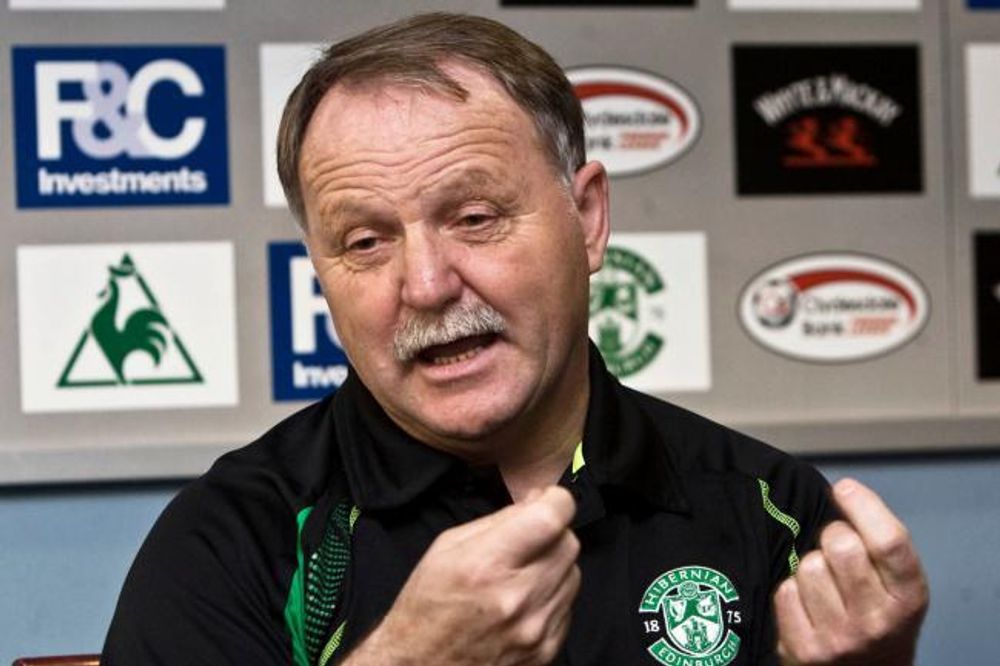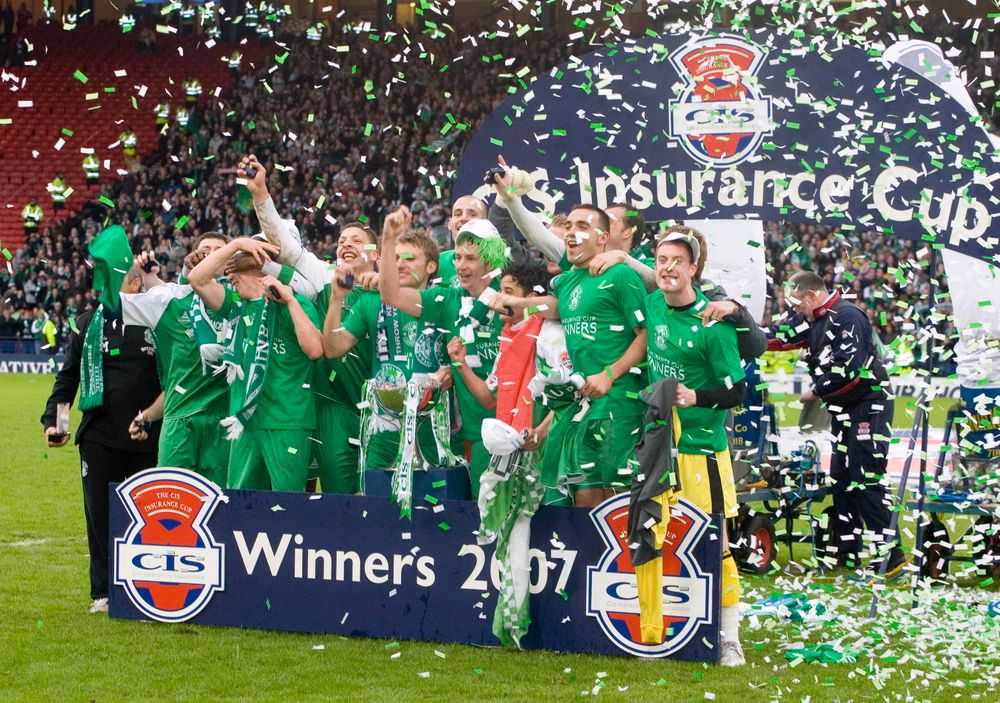Most clubs have had an era that would be considered golden, but it’s a little rarer to find a generation of players coming through the academy and leaving an indelible mark on the club’s first team and culture. They bring with them promise, offering fans hope that their club can reach new heights.
Manchester United had the iconic Class of ‘92, including David Beckham, Paul Scholes, Ryan Giggs and the Neville brothers. Spain also had their own that included players like Xavi, Andrés Iniesta, Xabi Alonso and Fernando Torres. What defines these groups of players were the proximity of their age and that they were developed in the same system.
Unlike Spain’s national golden generation, the Hibernian equivalent was a far more localised version, most of whom grew up not too far apart and worked together extensively for years before they’d even seen first team football, a few even before Hibs at Hutchison Vale. What was special about them is inexplicable, their own youthful virtuosity blossoming in various ways. There was the Scott Brown that we grew to love as the passionate hard-tackler years later, playing alongside the nippy and goal-hungry Derek Riordan.
But it wasn’t just those two. Tam McManus, Garry O’Connor, Kevin Thomson, Steven Whittaker and Steven Fletcher all made their way together through the Hibs ranks as players and mates who, as a group, were just incredibly talented young lads that enjoyed playing football together for a team that, unbeknownst at the time, would eventually be built around them.

Donald Park is one of those footballing gurus with an eye for talent. The kind of man who is able to separate the wheat from the chaff way before most others have even seen their developmental potential. It’s thanks to his role as youth coach at Hibs that many of these players ended up at the club. More than just getting them along, Park helped nurture them, offering the routine and structure that was required without dousing their inimitable joy of playing.
There’s a fine balance as a youth coach. Pushing, but not so hard the player turns away from the game. Many great players have never reached their full potential for one reason or another. Park was determined that this batch of talent at Easter Road wouldn’t fall foul to the trappings of teenage life.

It was at the turn of the millennium, under Alex McLeish, that these youngsters managed to see some first-team minutes. Although largely utilised as fresh legs at the end of the game, Kenny Miller was slightly older than the others, and was already starting to draw the attention to the side’s youthful prospects. His reputation as a force was cemented with his reception of the Scottish PFA Youth Player of the Year in 2000.
At this point in time, Scottish football still had the cash of the heady 90s. That meant Scottish clubs still had the clout to draw bigger names. Hibs had Russell Latapy and Franck Sauzée, amongst others. Under McLeish, this side fell short of any silverware, but finished their first season back in the top flight mid-table with a Scottish Cup final appearance followed by third place and a semi-final appearance in the 00/01 season. Although Miller had moved on to Rangers, slots in the first team weren’t much easier to break into.
McLeish was reunited with Miller at the end of that season, with Hibs finding a replacement in Bobby Williamson, who bore the burden of being the solution to the spiritual void left at the club after Sauzée’s brief managerial stint and the departure of other senior players. Williamson inherited the golden generation of players from McLeish’s side, although none had really broken through yet.
Against the backdrop of financial disarray, the result of the Sky TV deal collapsing, Scottish football saw its fortunes turn almost overnight. The impact reverberated around all of the top-tier clubs, an exodus of talent in that period punctuated the statement of intent for Scotland’s footballing future. Williamson’s hands were tied financially too. His hope of rebuilding the club would have to come from within. So, his eyes turned to the youth side.
It was in the 2003/04 season that this group’s appearances began to become more regular. Scott Brown made his name, a youngster whose no-nonsense approach instantly endeared him to the Easter Road faithful. Kevin Thomson broke through too, displaying an intelligence in the midfield, balancing the fury of Brown. Up top Riordan and O’Connor were coming onto a game, a Scottish Dwight Yorke and Andy Cole, playing with a glint in their eye and the reckless abandon of youth. When they linked up for goals, it looked to be for fun.
Whittaker was there too. Although the player struggled to find much consistency in a Williamson squad that had potential way beyond their performances. The Glaswegian’s side floundered in the league, but an impressive cup run that brushed aside both of the Old Firm to reach the League Cup final hinted at what could be under the right supervision.
Ideologically, Williamson’s approach was at odds with the fire evident in his youthful side’s stomach. They wanted action, goals, excitement. Williamson was happy enough to settle, a jarring approach for a group intent on making their name in the game. This evident chasm in ideas was sutured by Tony Mowbray’s replacement of Williamson, a manager who, like the players, was intent on making a statement.
Mowbray mightn’t have discovered the players, but he moulded them into astute professionals in his free-flowing side that media dubbed the ‘Green Brazil’. As flattering a compliment, it wasn’t just hot air. His side had structure and, in the structure, were freely able to express themselves. Mowbray nailed down a position for Whittaker, building his new-look side around the ascendant stars.
Fearless under Williamson, the squad felt a natural fit as Mowbray turned their valiant energy into something far more focussed, crusading to a third-place finish in his maiden run. An impressive 64 goals in the side’s 38 league games highlighted the Yorkshireman’s penchant for attacking football. Following up with another season of Riordan as the club’s top scorer and a fourth-place finish and a season’s biggest win as the side crushed Livingston 7-0 at home. This record of back-to-back top four finishes was the first since Eddie Turnbull’s tenure two decades prior.
No good thing lasts in Scottish football though and the end of the 05/06 season became a turning point for Hibs’ golden generation. Mowbray left to further his career at West Bromwich Albion and O’Connor departed to Russia that same season, netting the club around £1.6 million.

Former Hibs midfielder John Collins came in as his replacement and whilst his first season in charge lacked any of the descriptors that would’ve been applied to Mowbray’s side, the ‘golden generation’ managed to get some silverware of their own - the only trophy of their illustrious half-decade together at Hibs. A League Cup final victory over Kilmarnock was the first tournament win in 15 years, but the glory was short-lived.

Players staged a mutiny against Collins’ approach. At the end of that season, Thomson signed for Rangers and Riordan for Celtic, followed by Brown and Whittaker the following season to Celtic and Rangers respectively. Their transfers netted Hibs around £8.5 million, with Brown’s £4.4 million price tag being the highest exchanged between two Scottish clubs, testament to each of their academy foundations.
As Scottish football suffered collectively at the hands of fallen TV deals, Hibernian’s youth were given a rare opportunity to collect valuable first-team minutes. What this gifted the club, and its fans was a ‘golden generation’ - some hope in a period of turmoil. Their carefree football, particularly under Mowbray, was edge-of-your-seat stuff. It was a statement that flew in the face of teams whose tighter belts manifested as a more conservative football.
Hibs would never have been able to hold onto those players. Their own ambitions combined with the potential weekly earnings boost was too much to compete against. At least, though, Hibs received compensation for this exuberant band of young Scots, money that contributed to the club becoming debt-free and able to focus on creating a long-term plan for infrastructure development.
Yet to be replicated, a new generation of young Hibs players are coming through, providing a fresh flash of hope as the club are going through this transitional phase. Whilst they may not have the opportunity to retire Roy Keane again, as the energy of the golden generation managed to 15 or so years ago, these players do have the opportunity to consolidate Hibs’ position as the Old Firm’s greatest challengers. Whilst that may be a bold claim, through the presence of Ryan Porteous and the dominance of Josh Doig - it is a genuine ambition that could see a second golden generation come out of a period of chaos.

